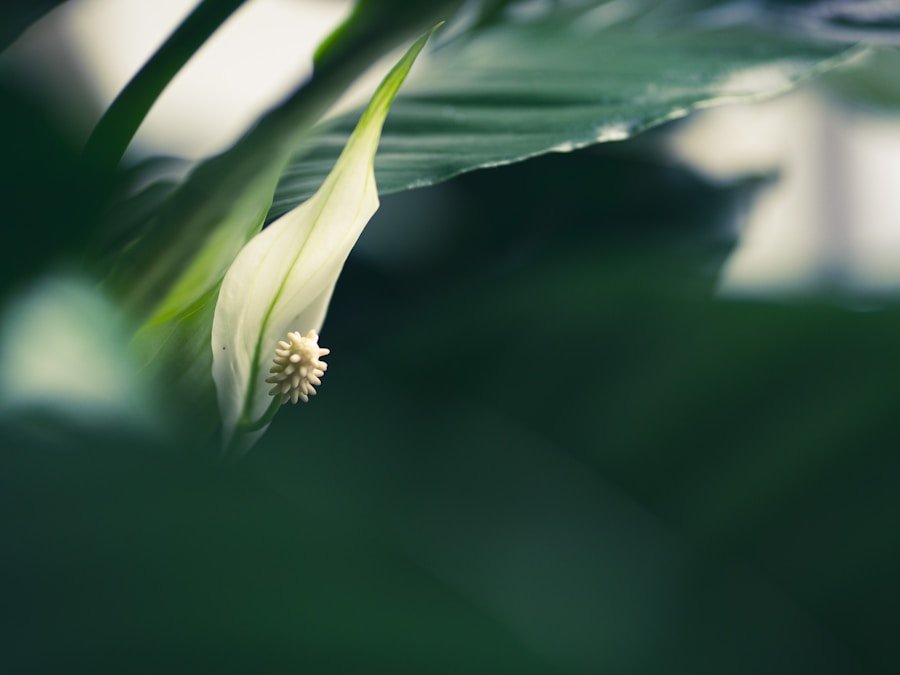Snake plants, also known as Sansevieria, are popular houseplants renowned for their air-purifying properties and low maintenance requirements. However, a crucial aspect of snake plant care often overlooked is the significance of using suitable potting soil. The soil in which a snake plant is potted plays a vital role in its overall health and growth, providing essential nutrients, aeration, and drainage for the plant to flourish.
Conversely, using the wrong type of soil can lead to issues such as root rot, stunted growth, and even plant death. Therefore, it is imperative for snake plant owners to understand the importance of selecting the best potting soil for their plants. When selecting the right soil for snake plants, it is essential to consider their natural habitat.
Native to arid regions of West Africa, snake plants grow in well-draining, sandy soils. Replicating these conditions in a domestic setting is crucial for the plant’s health. Additionally, snake plants possess rhizomes, underground stems that store water and nutrients, allowing them to survive in drought-like conditions and tolerate being pot-bound.
Consequently, using a well-draining soil mix is vital to prevent waterlogged conditions that can lead to root rot. By understanding the natural habitat and growth habits of snake plants, plant owners can make informed decisions when choosing the best potting soil for their plants.
Key Takeaways
- The right soil is crucial for healthy growth and air purification abilities of snake plants.
- Factors to consider when selecting snake plant potting soil include drainage, aeration, and nutrient content.
- Different types of potting soil, such as cactus mix or succulent mix, can be suitable for snake plants.
- Proper soil maintenance is essential for the health and longevity of snake plants.
- The role of potting soil in promoting healthy growth of snake plants includes providing adequate support and nutrients for the roots.
Choosing the Best Potting Soil for Snake Plants
Drainage: The Key to Preventing Root Rot
A well-draining soil mix is essential for snake plants, as they are susceptible to root rot if left in standing water. A good potting mix for snake plants should contain ingredients such as perlite, coarse sand, or pumice to ensure adequate drainage. These materials help to prevent water from pooling at the bottom of the pot, which can lead to root rot and other moisture-related issues.
Aeration for Healthy Root Growth
In addition to good drainage, snake plants also require a soil mix that provides adequate aeration for their roots. Aeration is important for promoting healthy root growth and preventing compacted soil, which can suffocate the roots and hinder nutrient uptake. Therefore, a lightweight potting mix that allows air to circulate around the roots is ideal for snake plants.
Long-Term Health and Growth
Snake plants are relatively low-maintenance and do not require frequent repotting. As a result, using a well-balanced potting mix that provides essential nutrients for an extended period is crucial for their long-term health and growth. By considering these factors when choosing the best potting soil for snake plants, plant owners can ensure that their plants have the best possible growing conditions.
The Role of Potting Soil in Promoting Healthy Growth of Snake Plants
The right potting soil plays a crucial role in promoting healthy growth of snake plants. A well-draining soil mix with good aeration is essential for preventing issues such as root rot and promoting robust root development. When a snake plant’s roots are able to access oxygen and nutrients in the soil, they are better equipped to support healthy foliage growth above ground.
Additionally, using a nutrient-rich potting mix can provide the necessary elements for strong and vibrant leaves, as well as promote overall plant health. Furthermore, the right potting soil can also contribute to the overall stability and structure of a snake plant. A well-balanced soil mix can provide adequate support for the plant’s rhizomes and roots, preventing them from becoming overcrowded or suffocated.
This is particularly important for maintaining the upright growth habit of snake plants and preventing them from becoming top-heavy or prone to tipping over. By providing a stable and supportive growing medium, the right potting soil can help snake plants to maintain their structural integrity and overall appearance. In summary, the role of potting soil in promoting healthy growth of snake plants cannot be overstated.
A well-draining, aerated, and nutrient-rich soil mix is essential for supporting robust root development, healthy foliage growth, and overall plant stability. By providing the right growing conditions through proper soil selection, snake plant owners can ensure that their plants thrive and continue to bring beauty and benefits to their indoor spaces.
How the Right Soil Can Enhance Air Purification Abilities of Snake Plants
| Soil Type | Features | Benefits |
|---|---|---|
| Well-draining potting mix | Contains perlite or sand | Prevents waterlogging and root rot |
| Air-purifying soil | Contains activated charcoal | Improves air quality and removes toxins |
| Organic potting soil | Contains compost or peat moss | Provides nutrients and promotes healthy growth |
Snake plants are renowned for their air-purifying abilities, making them popular choices for indoor spaces such as homes and offices. These plants are particularly effective at removing toxins such as formaldehyde, benzene, xylene, and trichloroethylene from the air, making them valuable additions to any indoor environment. However, the ability of snake plants to purify the air is closely linked to the quality of their growing medium.
The right potting soil can enhance the air purification abilities of snake plants by promoting healthy growth and enabling them to function at their best. A well-draining soil mix with good aeration is essential for supporting healthy root development in snake plants. When a plant’s roots are healthy and able to access oxygen and nutrients in the soil, they are better equipped to support vigorous foliage growth above ground.
This lush foliage not only adds beauty to indoor spaces but also increases the surface area available for air purification. Additionally, using a nutrient-rich potting mix can provide the necessary elements for strong and vibrant leaves, which are essential for effective air purification. Furthermore, using a high-quality potting mix can help snake plants to maintain their overall health and vitality, enabling them to function at their best when it comes to air purification.
Healthy plants are better able to remove toxins from the air and contribute to a cleaner and healthier indoor environment. Therefore, by providing the right growing conditions through proper soil selection, snake plant owners can enhance the air purification abilities of their plants and enjoy the benefits of cleaner indoor air.
Factors to Consider When Selecting Snake Plant Potting Soil
When selecting potting soil for snake plants, there are several key factors that plant owners should consider to ensure that their plants have the best possible growing conditions. Firstly, it is important to choose a well-draining soil mix that prevents water from pooling at the bottom of the pot. Snake plants are susceptible to root rot if left in standing water, so using a soil mix with good drainage is essential for their health and longevity.
In addition to good drainage, snake plants also require a soil mix that provides adequate aeration for their roots. A lightweight potting mix that allows air to circulate around the roots is ideal for promoting healthy root development and preventing issues such as compacted soil. Furthermore, using a nutrient-rich potting mix can provide essential elements for strong and vibrant leaves, which are important for supporting healthy growth and air purification abilities.
Another important factor to consider when selecting potting soil for snake plants is pH level. Snake plants prefer slightly acidic to neutral soil with a pH range of 6.1-7.5. Therefore, choosing a potting mix with an appropriate pH level is crucial for providing optimal growing conditions for these plants.
By considering these factors when selecting potting soil for snake plants, plant owners can ensure that their plants have the best possible environment for healthy growth and longevity.
Tips for Maintaining the Health and Longevity of Snake Plants through Proper Soil
Repotting for Optimal Health
To maintain the health and longevity of snake plants, it is essential to repot them into fresh soil every 2-3 years. This process replenishes nutrients, prevents compacted soil, and allows plant owners to inspect the roots for any signs of disease or overcrowding.
Watering with Caution
Snake plants require careful watering to prevent issues like root rot. It is crucial to water them sparingly and allow the soil to dry out between waterings. Using a well-draining soil mix and monitoring soil moisture levels with a moisture meter can help prevent overwatering.
Fertilizing for Growth
Fertilizing snake plants during the growing season can provide essential nutrients for their growth. However, it is vital to fertilize them sparingly to avoid over-fertilization or salt buildup in the soil. Using a balanced fertilizer at half strength every 4-6 weeks can ensure optimal growth. By following these soil care tips, plant owners can ensure their snake plants remain healthy and vibrant for years to come.
Exploring Different Types of Potting Soil for Snake Plants
There are several different types of potting soil that are suitable for snake plants, each with its own unique characteristics and benefits. One popular option is a cactus or succulent mix, which is designed to provide excellent drainage and aeration for arid-loving plants such as snake plants. These mixes often contain ingredients such as perlite, coarse sand, or pumice to prevent waterlogging and promote healthy root development.
Another option for potting soil for snake plants is a well-balanced indoor plant mix that provides essential nutrients for long-term growth. These mixes often contain ingredients such as peat moss or coconut coir to retain moisture while still allowing adequate drainage. They also typically contain added nutrients such as nitrogen, phosphorus, and potassium to support healthy foliage growth.
Furthermore, some plant owners prefer to create their own custom potting mix for snake plants by combining ingredients such as peat moss, perlite, coarse sand, and compost in specific ratios. This allows them to tailor the mix to suit their individual plant’s needs and growing conditions. In conclusion, there are several different types of potting soil that are suitable for snake plants, each with its own unique characteristics and benefits.
By exploring these options and considering factors such as drainage, aeration, nutrient content, and pH level, plant owners can select the best potting soil for their beloved snake plants and ensure that they have optimal growing conditions for health and longevity. In conclusion, selecting the best potting soil for snake plants is crucial for promoting healthy growth and enhancing their air purification abilities. By understanding the importance of using well-draining, aerated, nutrient-rich soil mixes that replicate their natural habitat conditions, plant owners can ensure that their snake plants thrive in indoor environments.
Additionally, by considering factors such as pH level and selecting appropriate types of potting soil, they can provide optimal growing conditions for their beloved plants. With proper care and maintenance through proper soil selection and care tips, snake plant owners can enjoy vibrant and healthy plants that continue to bring beauty and benefits to their indoor spaces for years to come.
FAQs
What is snake plant potting soil?
Snake plant potting soil is a specially formulated soil mixture designed to provide the ideal growing conditions for snake plants. It typically consists of a well-draining mix of materials such as peat moss, perlite, and coarse sand to mimic the plant’s natural habitat.
Why is it important to use the best potting soil for snake plants?
Using the best potting soil for snake plants is important because it provides the proper drainage and aeration necessary for healthy root growth. It also ensures that the plant receives the right balance of nutrients to support its overall growth and development.
What are the characteristics of the best snake plant potting soil?
The best snake plant potting soil should be well-draining, lightweight, and have a good balance of organic matter and inorganic materials. It should also be free from any pests, diseases, or weed seeds that could potentially harm the plant.
How does potting soil affect the air purification capabilities of snake plants?
The quality of potting soil can directly impact the air purification capabilities of snake plants. A well-draining and nutrient-rich soil can support healthy growth, which in turn allows the plant to effectively remove toxins from the air through its leaves.
What are some common ingredients found in the best snake plant potting soil?
Common ingredients found in the best snake plant potting soil include peat moss, perlite, coarse sand, and sometimes a small amount of organic fertilizer. These ingredients help to create a well-balanced and well-draining soil mixture for optimal plant growth.








1 Comment